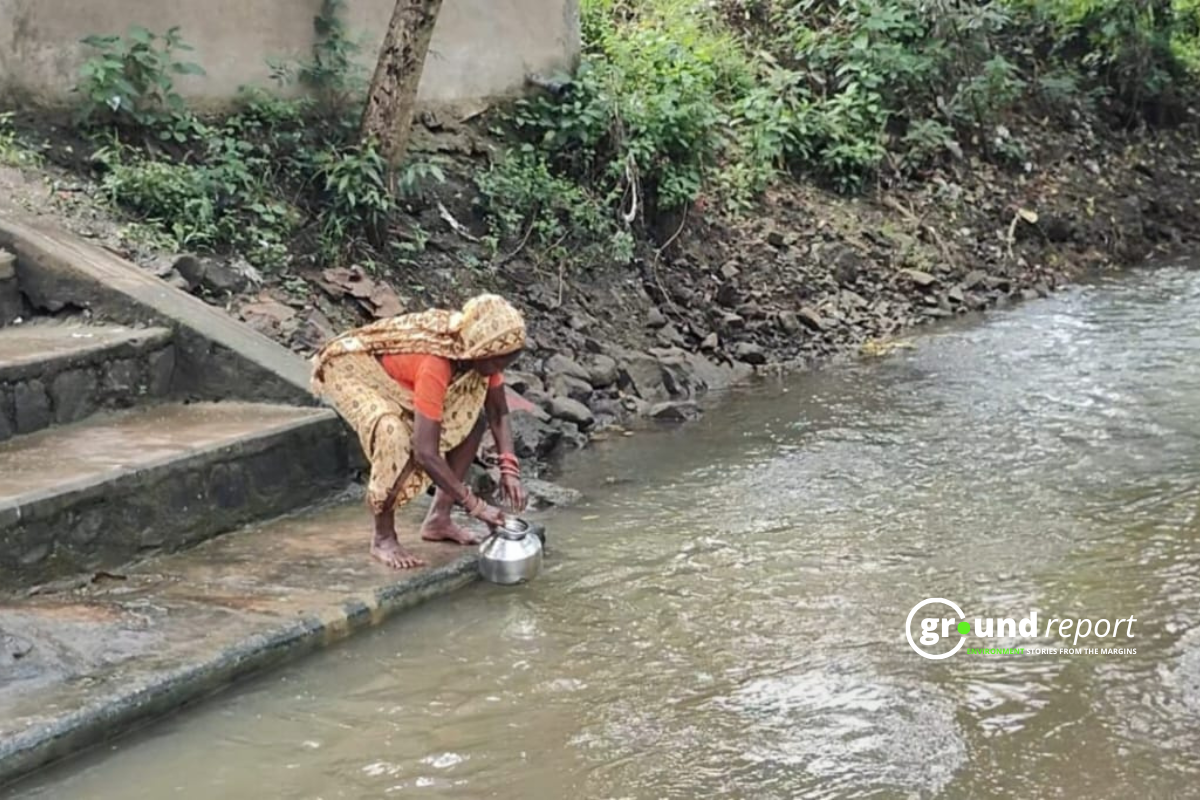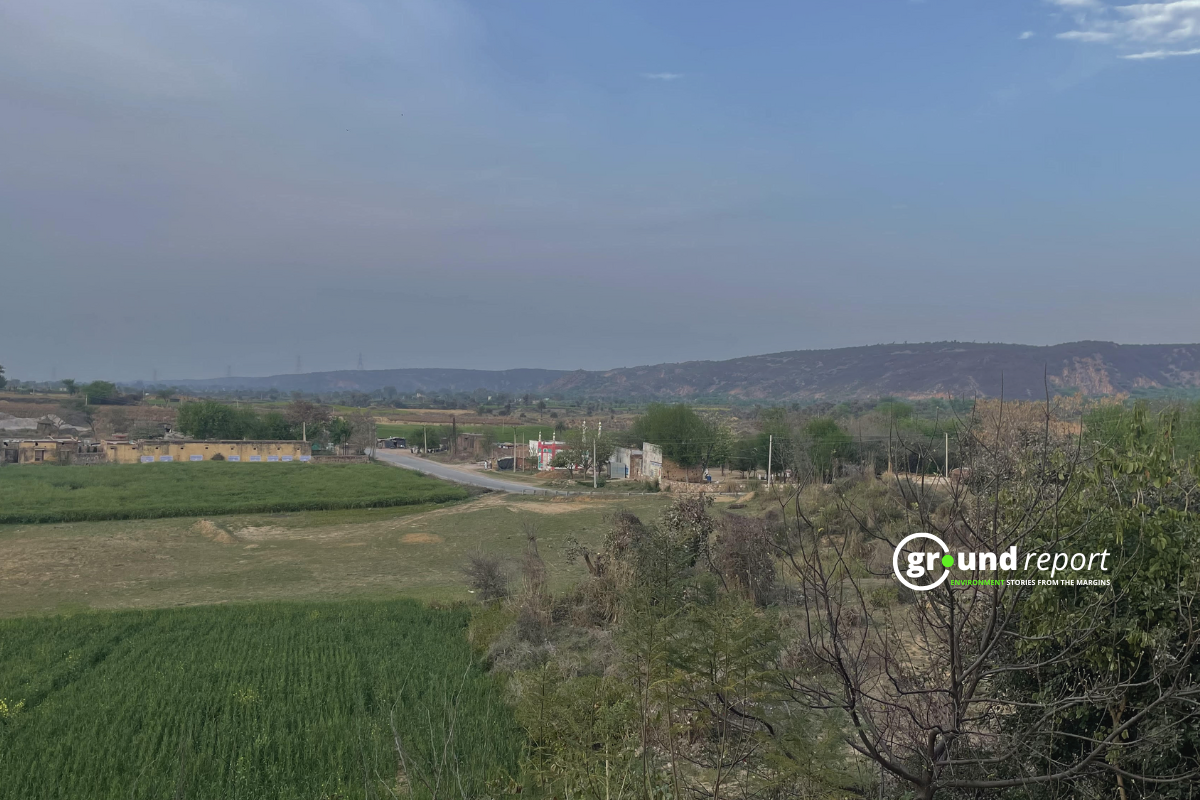Fifty-four-year-old Naru Damor lies on a cot in the rear section of his modest home made of tin boards in Maudipada village, located in Jhabua district. His small room is sweltering as the temperature has soared in the past 15 days. Damor is suffering from tuberculosis, and the extreme heat has further weakened his body, with his limbs visibly emaciated. He was diagnosed with tuberculosis fifteen days ago after an X-ray at the government hospital in Thandla, situated about 25 kilometers away.
“I am experiencing severe pain throughout my body, and I am unable to do any work. I spend the entire day coughing,”
Damor shares about his failing health. Despite these difficulties, in the past 15 days, he has taken his medication only thrice. When asked the reason, he explains,
“I received only three pills from the hospital. I was told that the rest would be given later, but I haven’t received any more pills so far.”
Whenever his body pain increased significantly, he would take one of these pills. But now, all his pills are over. Naru shares this as he lies in pain for the past two days without medicine. Naru is not the only patient facing the pain of TB without medicines. For the past month, most primary health centers in the country have been struggling with a shortage of TB medications. This is the second time in the past seven months that such a shortage has occurred.
The Government of India has set a goal to eliminate TB nationwide by 2025. However, many states, including Madhya Pradesh, are grappling with a shortage of medications. This shortage not only prevents patients from taking proper dosage of medicine but also makes the treatment more difficult.
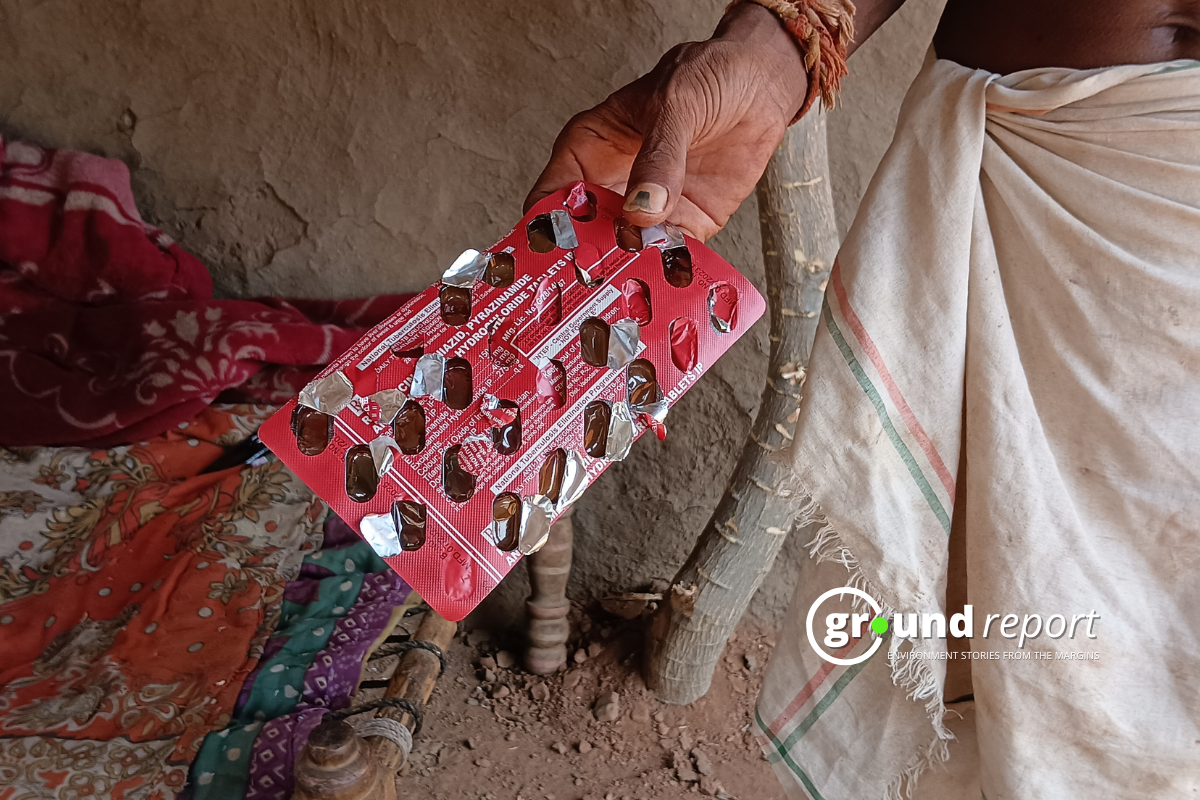
Emergence of MDR-TB Due to Medication Shortage
When a patient stops taking TB medication midway, the disease becomes even more lethal. In such cases, the disease can turn into drug-resistant TB (DR/MDR-TB), where the patient’s body develops resistance to the medication, rendering it ineffective. There can be several reasons for TB turning into this form, including the unavailability of medications, poor quality, and improper storage.
By 2022, there were approximately 410,000 MDR-TB patients worldwide. India’s situation is particularly dire, with about 27% of the world’s MDR-TB patients. According to a 2020 statistic from the World Health Organization, this number was around 135,000. However, according to India’s TB Report 2023, the number of MDR-TB patients in the country was 63,801 in 2022, but there was a 32% increase in this number that year.
Dr. Faisal Patel, head of the TB eradication program in Jhabua district, says that after stopping the medication course midway, a patient becomes ‘hyper-sensitive,’ making treatment relatively difficult.
“Generally, a TB patient is given four types of medication. But during MDR-TB, two of these medications don’t work. Then they have to undergo a 9 to 11-month or even an 18 to 24-month course,” Dr Patel explains.
Due to the effects of these medications, patients experience increased heart rate and other symptoms, making it relatively difficult for them to endure the treatment.
Naru fears that his TB too could progress to MDR-TB, though he may not be familiar with the medical term “MDR-TB.” However, he understands that not taking the medication will render his TB incurable.
“I’ll take the medication if I receive it daily,” Naru asserts angrily.
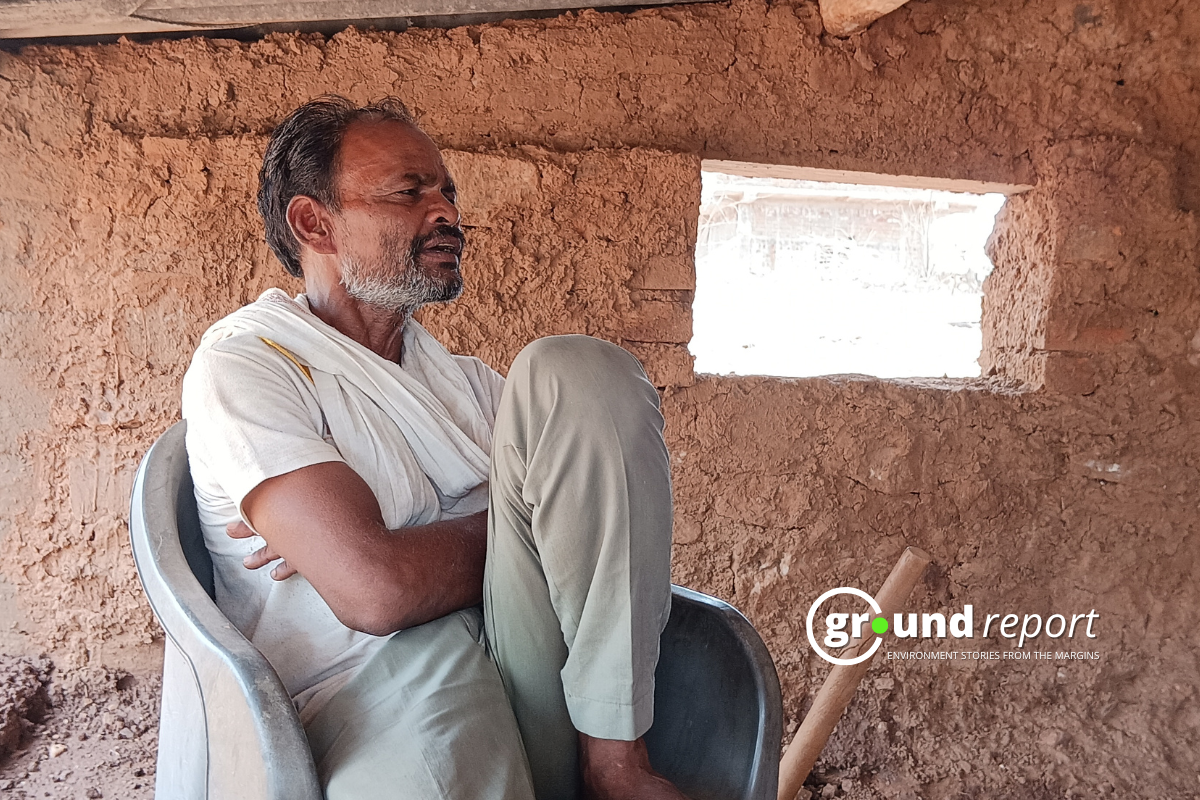
Turning to Witch Doctors due to shortage of pills?
Mikla Ditta Katara, hailing from Paskheria village in Thandla block, has been assisting TB patients for the past two decades. He educates the community about the importance of proper TB treatment and government healthcare schemes. However, the local tribes often place their trust in ‘Badwa,’ witch doctors who claim to cure ailments and ward off evil spirits through rituals.
Five months ago, when Puniya Vagji Damor from Talai village fell ill, he sought the help of a local Badwa. He spent Rs 200 and three Kadaknath chickens, each valued at around 1200 to 1500 rupees, on the treatment. The rituals performed by the Badwa continued for about two months. Only when his condition deteriorated further did he finally go to hospital.
Mikla explains that with the shortage of medication, more locals may resort to seeking help from Badwas.
“People here have immense faith in the witch doctors. If they can’t get proper medication, they may turn to them for relief, making it challenging to ensure effective treatment,” he adds.
Dr. Patel also points out that often badwa misguide patients, causing them to stop their medication. It’s important to consider that if these badwa have such an influence on the tribals, the medication shortage will only give them more opportunities to dominate the patients.
TB bacteria and loneliness
Treatment for TB is free in all government hospitals in the country. The Nikshay Poshan Yojana for TB patients was initiated by the central government in April 2018. Under this scheme, the central government provides Rs 500 per month to TB patients for proper nutrition. This amount is provided through direct benefit transfer for the duration of the TB course.
Titya Gobariya, a resident of Agasia Panchayat, has been unable to avail himself of the benefits of this scheme. On a hot May afternoon, he returns from his one-acre farm. Gobariya has three sons and one daughter, all of whom are married and live separately, leaving him alone. Describing his predicament, he says,
“I rely on my daughters-in-law for food. Sometimes, I have to go hungry when they don’t provide me with meals.”
Gobariya has also not received medication for the past two months, worsening his chest pain and cough. Working has become challenging for him, and he struggles to afford three proper meals a day.
“If the government provides me with financial assistance, I will open a small shop. I am no longer capable of physical labor.”
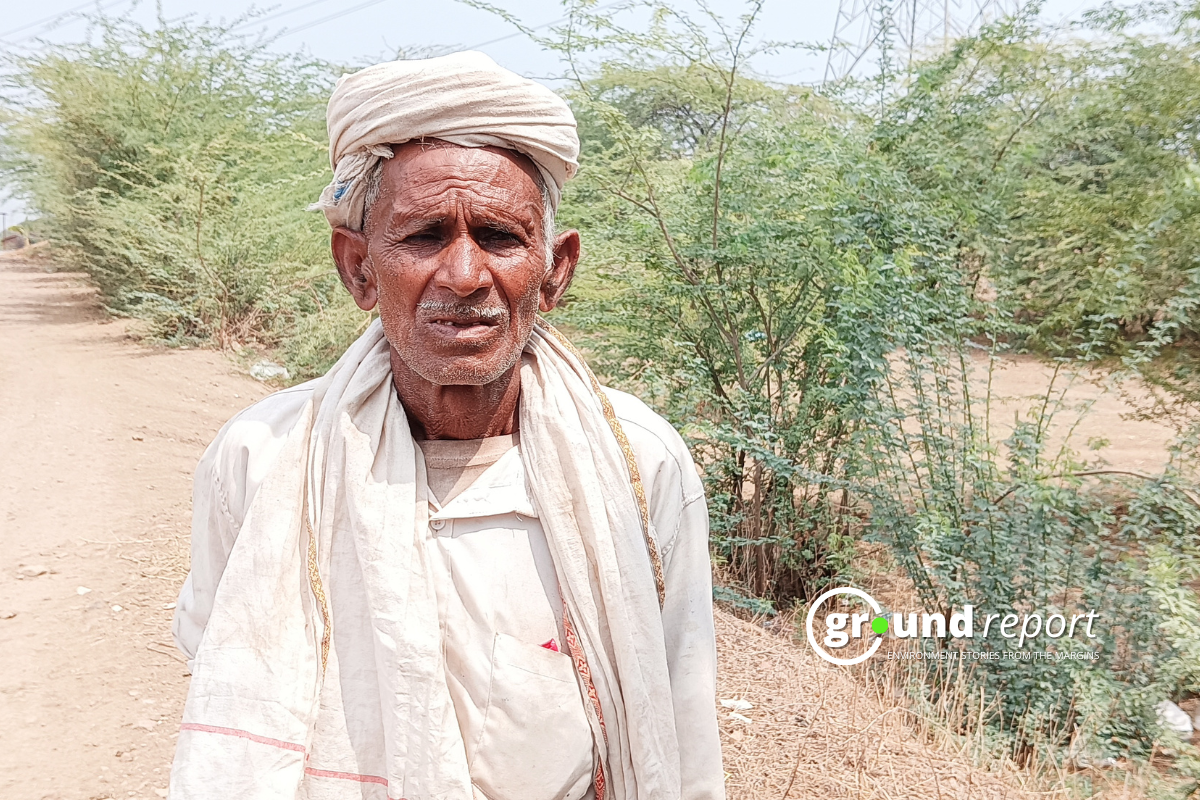
Nutrition, a big problem
Gobariya is not alone in facing the dual challenges of TB and inadequate nutrition. A proper diet is a crucial weapon in fighting tuberculosis. Unfortunately, malnutrition afflicts 55% of TB patients in India. Government guidelines stipulate that a TB patient should weigh a minimum of 40 kilograms and consume 1.2 to 1.5 grams of protein per kilogram daily. The government promotes community-supported nutrition baskets based on these guidelines, which should provide adults with a total of 1000 calories and 30 to 50 grams of protein.
According to the government, the community should manage this basket. However, John Mandoria of Piramal Health, a voluntary organization, says,
“Expecting such a community initiative in tribal districts like Jhabua, where most of the population migrates for livelihood, is not possible. If we leave voluntary organizations, even local councils or panchayats are not financially capable enough to provide this help.”
Meanwhile, at Naru Damor’s house, green vegetables are cooked only once every two days. Similarly, he gets a chance to eat fruits only once, or sometimes twice, a month. However, Naru cannot recall a single day of the month when he had a full meal.
The Government of India launched the Nikshay Mitra scheme in 2022. Under this scheme, any eligible individual or organization can provide additional diagnostic facilities, nutrition, or skill support to one or more TB patients. According to a figure presented in Parliament in 2023, 9.55 million patients have been enrolled under this scheme. We spoke to many patients in Meghnagar, Rama, and Thandla blocks of Jhabua about this, but most people are not benefiting from this scheme.
The vicious cycle of poverty and migration
The 2011 census reveals that Jhabua district is home to 1.025 million people, with 9.33 lakh residing in rural areas. Agriculture sustains over 70% of the population, yet only 27.15% of the land is irrigated. Consequently, 50% of the district’s inhabitants live below the poverty line.
Dhulji Thavariya, a TB patient from Maudipada village, is among them. Thavariya had to borrow Rs 60,000 at a 10% interest rate from a local moneylender when he fell ill. To repay it, his eldest son migrated to Gujarat.
“A portion of my son’s earnings over six months goes towards interest, and the rest feeds our family of eight,” he laments.
Thavariya believes that without TB, he could have cultivated a successful monsoon crop on his 4-acre farm, improving his financial situation and ensuring better nutrition for his family. Like Thavariya, many TB patients’ households are burdened by debt, forcing their family members to migrate to earn money so that they can repay their family loans. The cycle of migration, fueled by hefty loan interests, creates a vicious cycle with no end in sight.
TB decreasing in India
TB was identified as a problem in India for the first time in 1912. According to World Bank figures, the number of TB patients per 100,000 population in India has decreased over the past 22 years (2000-2022). In 2000, there were 322 TB patients per lakh people. By 2020, this number had decreased to 197. However, in 2022, this number was 199. An official associated with the TB campaign in Jhabua told us that testing 3,500 people per lakh population is mandatory for the Health Department.
The TB report 2023 issued by the Government of India stated that there has been an improvement in the case notification rate in the country. In 2022, a total of 2.42 million cases were identified across the country. This is 13% higher than in 2021. An increase in case detection rates means that the number of patients completing the course in India has increased.
Deepening crisis of TB in Jhabua
However, in Jhabua, the situation regarding TB numbers doesn’t mirror the national figures. Data from the district hospital reveals that in 2019, there were a total of 2,555 patients in this district. By 2023, this number had risen to 2,846. However, Dr. Patel attributes this increase to improved testing and better organization of data.
“Now everything is online, so data is coming in an organized manner.”
It is essential to pay attention to all these aspects related to TB treatment. In such a situation, where TB treatment is intertwined with poverty, nutrition, drug availability, and accessibility to health facilities, ensuring everything together becomes necessary.
In Maudipada village, Naru Damor’s family is concerned about the shortage of medication and fears it may worsen in the days ahead. Although Damor is still in the early stages of treatment, his wife expresses her apprehension, stating, “If I don’t receive medication, the risk of dying will increase.”
Keep Reading
- Story of Kegu, a tribal of Jhabua suffering from Sickle Cell Disease
- Delhi-Mumbai Expressway: What did the tribals get from this path of development?
- PM Matsya Sampada Yojana falling short in Bhopal?
- Heatwave takes a toll on women agricultural labourers in MP
Follow Ground Report for Environmental News From India. Connect with us on Facebook, Twitter, Koo App, Instagram, Whatsapp and YouTube. Write us on GReport2018@gmail.com and subscribe our free newsletter.
Don’t forget to check out our climate glossary, it helps in learning difficult environmental terms in simple language.





